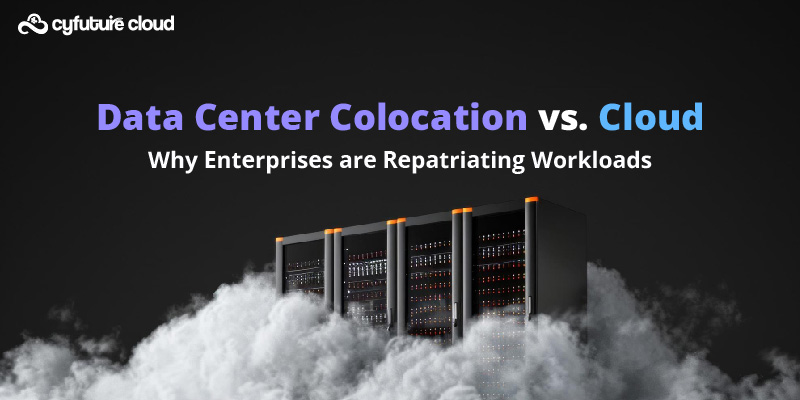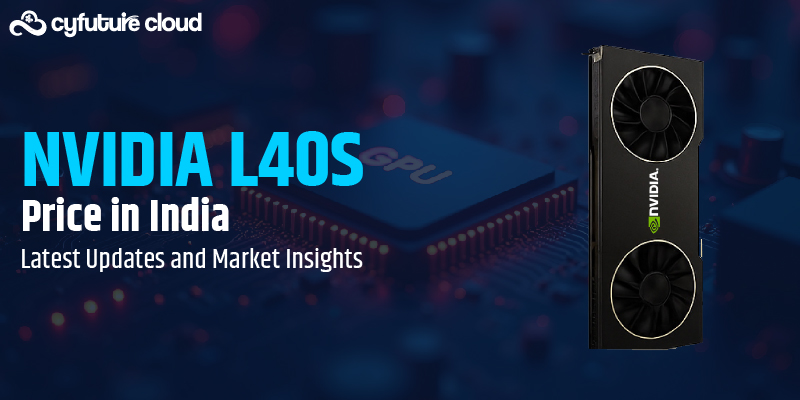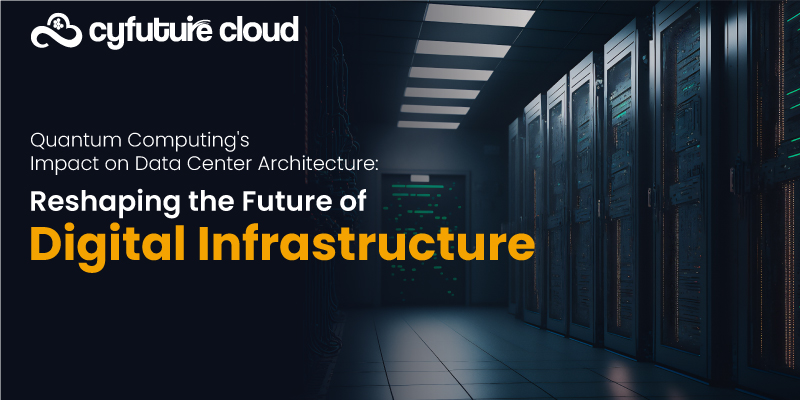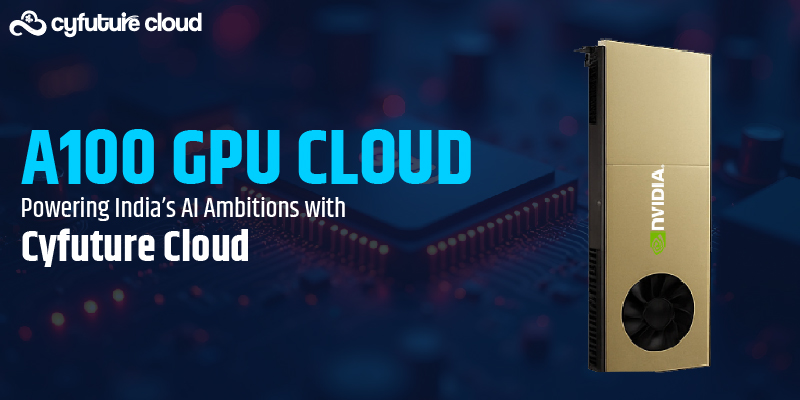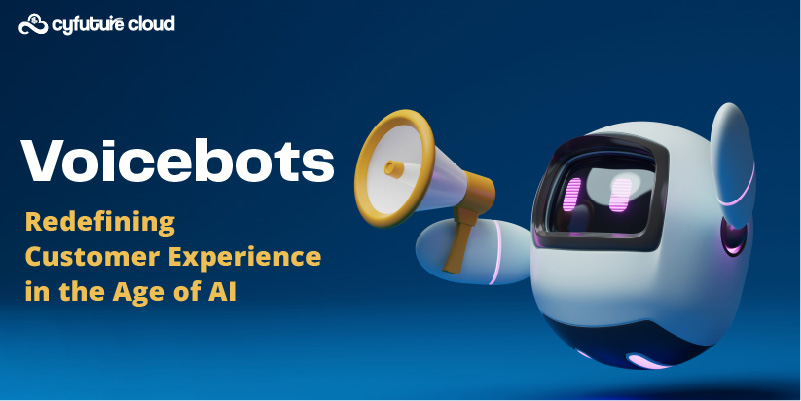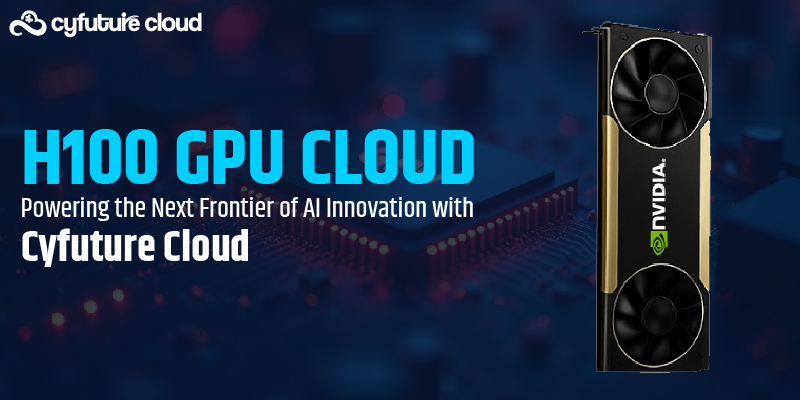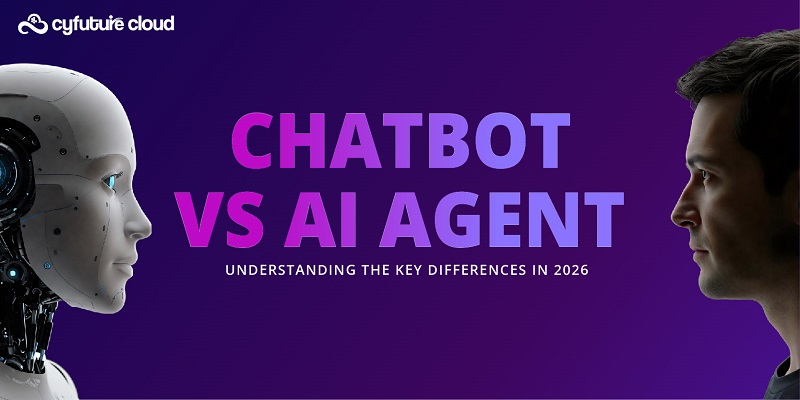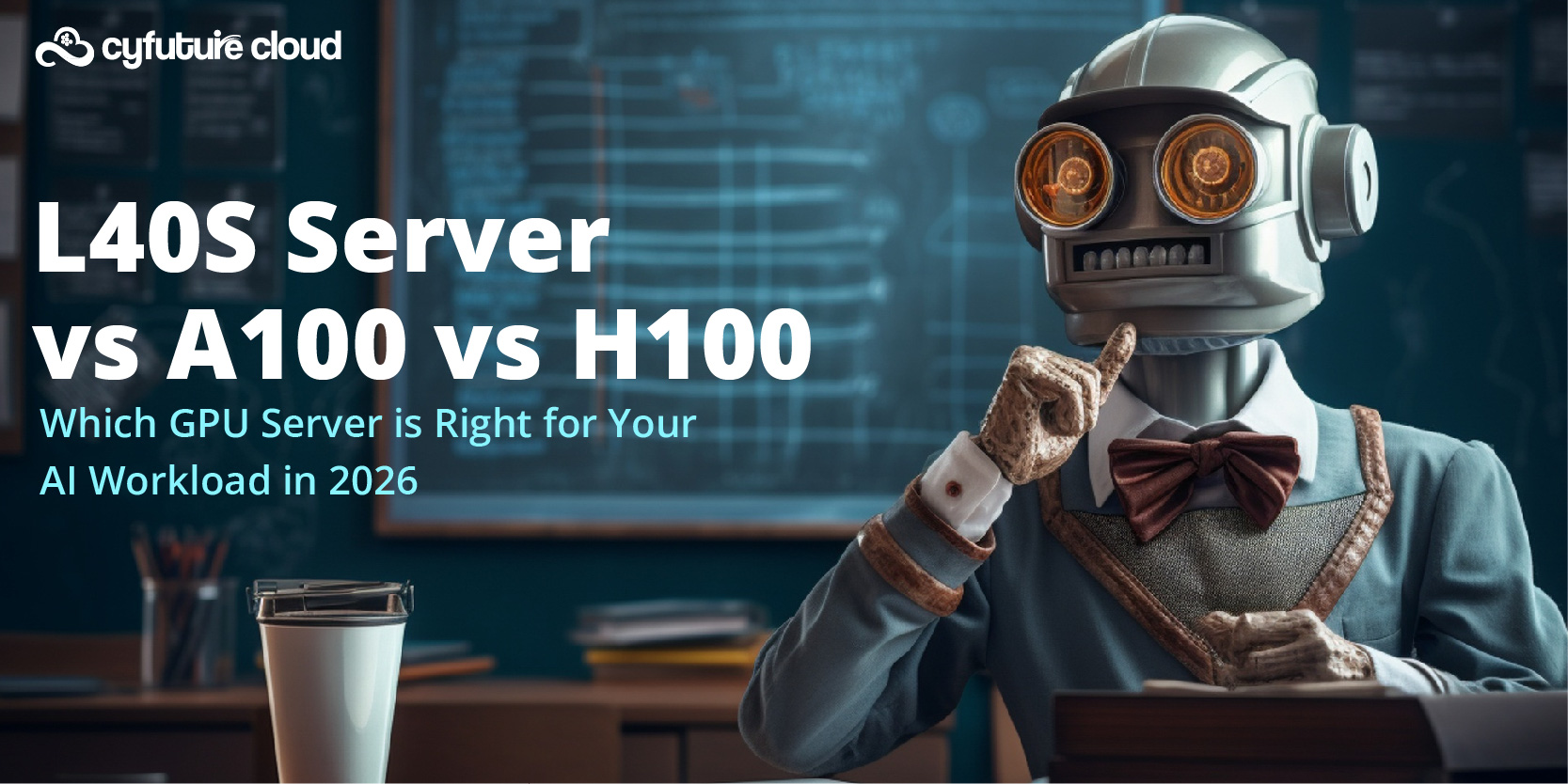Get 69% Off on Cloud Hosting : Claim Your Offer Now!
- Products
-
Compute
Compute
- Predefined TemplatesChoose from a library of predefined templates to deploy virtual machines!
- Custom TemplatesUse Cyfuture Cloud custom templates to create new VMs in a cloud computing environment
- Spot Machines/ Machines on Flex ModelAffordable compute instances suitable for batch jobs and fault-tolerant workloads.
- Shielded ComputingProtect enterprise workloads from threats like remote attacks, privilege escalation, and malicious insiders with Shielded Computing
- GPU CloudGet access to graphics processing units (GPUs) through a Cyfuture cloud infrastructure
- vAppsHost applications and services, or create a test or development environment with Cyfuture Cloud vApps, powered by VMware
- Serverless ComputingNo need to worry about provisioning or managing servers, switch to Serverless Computing with Cyfuture Cloud
- HPCHigh-Performance Computing
- BaremetalBare metal refers to a type of cloud computing service that provides access to dedicated physical servers, rather than virtualized servers.
-
Storage
Storage
- Standard StorageGet access to low-latency access to data and a high level of reliability with Cyfuture Cloud standard storage service
- Nearline StorageStore data at a lower cost without compromising on the level of availability with Nearline
- Coldline StorageStore infrequently used data at low cost with Cyfuture Cloud coldline storage
- Archival StorageStore data in a long-term, durable manner with Cyfuture Cloud archival storage service
-
Database
Database
- MS SQLStore and manage a wide range of applications with Cyfuture Cloud MS SQL
- MariaDBStore and manage data with the cloud with enhanced speed and reliability
- MongoDBNow, store and manage large amounts of data in the cloud with Cyfuture Cloud MongoDB
- Redis CacheStore and retrieve large amounts of data quickly with Cyfuture Cloud Redis Cache
-
Automation
Automation
-
Containers
Containers
- KubernetesNow deploy and manage your applications more efficiently and effectively with the Cyfuture Cloud Kubernetes service
- MicroservicesDesign a cloud application that is multilingual, easily scalable, easy to maintain and deploy, highly available, and minimizes failures using Cyfuture Cloud microservices
-
Operations
Operations
- Real-time Monitoring & Logging ServicesMonitor & track the performance of your applications with real-time monitoring & logging services offered by Cyfuture Cloud
- Infra-maintenance & OptimizationEnsure that your organization is functioning properly with Cyfuture Cloud
- Application Performance ServiceOptimize the performance of your applications over cloud with us
- Database Performance ServiceOptimize the performance of databases over the cloud with us
- Security Managed ServiceProtect your systems and data from security threats with us!
- Back-up As a ServiceStore and manage backups of data in the cloud with Cyfuture Cloud Backup as a Service
- Data Back-up & RestoreStore and manage backups of your data in the cloud with us
- Remote Back-upStore and manage backups in the cloud with remote backup service with Cyfuture Cloud
- Disaster RecoveryStore copies of your data and applications in the cloud and use them to recover in the event of a disaster with the disaster recovery service offered by us
-
Networking
Networking
- Load BalancerEnsure that applications deployed across cloud environments are available, secure, and responsive with an easy, modern approach to load balancing
- Virtual Data CenterNo need to build and maintain a physical data center. It’s time for the virtual data center
- Private LinkPrivate Link is a service offered by Cyfuture Cloud that enables businesses to securely connect their on-premises network to Cyfuture Cloud's network over a private network connection
- Private CircuitGain a high level of security and privacy with private circuits
- VPN GatewaySecurely connect your on-premises network to our network over the internet with VPN Gateway
- CDNGet high availability and performance by distributing the service spatially relative to end users with CDN
-
Media
-
Analytics
Analytics
-
Security
Security
-
Network Firewall
- DNATTranslate destination IP address when connecting from public IP address to a private IP address with DNAT
- SNATWith SNAT, allow traffic from a private network to go to the internet
- WAFProtect your applications from any malicious activity with Cyfuture Cloud WAF service
- DDoSSave your organization from DoSS attacks with Cyfuture Cloud
- IPS/ IDSMonitor and prevent your cloud-based network & infrastructure with IPS/ IDS service by Cyfuture Cloud
- Anti-Virus & Anti-MalwareProtect your cloud-based network & infrastructure with antivirus and antimalware services by Cyfuture Cloud
- Threat EmulationTest the effectiveness of cloud security system with Cyfuture Cloud threat emulation service
- SIEM & SOARMonitor and respond to security threats with SIEM & SOAR services offered by Cyfuture Cloud
- Multi-Factor AuthenticationNow provide an additional layer of security to prevent unauthorized users from accessing your cloud account, even when the password has been stolen!
- SSLSecure data transmission over web browsers with SSL service offered by Cyfuture Cloud
- Threat Detection/ Zero DayThreat detection and zero-day protection are security features that are offered by Cyfuture Cloud as a part of its security offerings
- Vulnerability AssesmentIdentify and analyze vulnerabilities and weaknesses with the Vulnerability Assessment service offered by Cyfuture Cloud
- Penetration TestingIdentify and analyze vulnerabilities and weaknesses with the Penetration Testing service offered by Cyfuture Cloud
- Cloud Key ManagementSecure storage, management, and use of cryptographic keys within a cloud environment with Cloud Key Management
- Cloud Security Posture Management serviceWith Cyfuture Cloud, you get continuous cloud security improvements and adaptations to reduce the chances of successful attacks
- Managed HSMProtect sensitive data and meet regulatory requirements for secure data storage and processing.
- Zero TrustEnsure complete security of network connections and devices over the cloud with Zero Trust Service
- IdentityManage and control access to their network resources and applications for your business with Identity service by Cyfuture Cloud
-
-
Compute
- Solutions
-
Solutions
Solutions
-
 Cloud
Hosting
Cloud
Hosting
-
 VPS
Hosting
VPS
Hosting
-
GPU Cloud
-
 Dedicated
Server
Dedicated
Server
-
 Server
Colocation
Server
Colocation
-
 Backup as a Service
Backup as a Service
-
 CDN
Network
CDN
Network
-
 Window
Cloud Hosting
Window
Cloud Hosting
-
 Linux
Cloud Hosting
Linux
Cloud Hosting
-
Managed Cloud Service
-
Storage as a Service
-
 VMware
Public Cloud
VMware
Public Cloud
-
 Multi-Cloud
Hosting
Multi-Cloud
Hosting
-
 Cloud
Server Hosting
Cloud
Server Hosting
-
 Bare
Metal Server
Bare
Metal Server
-
 Virtual
Machine
Virtual
Machine
-
 Magento
Hosting
Magento
Hosting
-
Remote Backup
-
 DevOps
DevOps
-
 Kubernetes
Kubernetes
-
 Cloud
Storage
Cloud
Storage
-
NVMe Hosting
-
 DR
as s Service
DR
as s Service
-
-
Solutions
- Marketplace
- Pricing
- Resources
- Resources
-
By Product
Use Cases
-
By Industry
- Company
-
Company
Company
-
Company
What is a GPU Cluster? An In-Depth Guide for Modern Enterprises
Table of Contents
Imagine training an AI to understand the world; what would take decades on a regular computer can now be achieved in days—sometimes even hours—thanks to the parallel processing firepower of GPU clusters. Today’s enterprises grapple with big data, insatiable AI workloads, and the rising demand for real-time insights.
At the core of these transformative technologies lies the GPU cluster: the modern workhorse for high-performance computing.
Defining the GPU Cluster
A GPU cluster is a networked group of graphics processing units (GPUs) working across multiple servers or nodes, designed to solve large, complex computational problems in parallel at speeds that significantly outpace traditional CPU-only systems. Each node typically contains CPUs, memory, storage, and one or more GPUs, and is connected through high-speed links such as InfiniBand or NVLink. Using frameworks like CUDA, Kubernetes, or SLURM, workloads are split and distributed so the computational heavy-lifting happens in tandem—dramatically accelerating AI, analytics, simulation, and rendering tasks.
- Homogeneous clusters: all GPUs are the same make and model—ideal for uniform workloads.
- Heterogeneous clusters: mix of GPU types and capabilities, offering flexibility for diverse computational needs.
Why GPU Clusters are Business Critical
The Performance Advantage
- Parallelization: CPUs handle sequential tasks well, but GPUs are optimized for parallel operations—hundreds or thousands of small tasks simultaneously.
- Blazing Speed: For deep learning models, rendering, or scientific simulations, GPU clusters deliver results in hours versus days on CPU-only infrastructures.
- Scalability: Easily expand capacity by adding more GPUs/nodes, especially with cloud-based solutions.
Efficiency and Economics
- Cost-Power Ratio: More performance per dollar spent compared to scaling CPUs alone. Reduced operational and time-to-market costs.
- Energy Efficiency: Modern GPUs offer significantly higher compute performance per watt, enabling sustainable data center operations.
- Elasticity: With cloud providers like Cyfuture Cloud, scale resources up or down on demand—paying only for usage spikes.
Enterprise-Grade Features
- Fault Tolerance: Distributed design reroutes workloads if a node/GPU fails, vital for mission-critical applications.
- Centralized Management: Orchestration tools and monitoring frameworks streamline deployment and optimization, ensuring best utilization rates.
Market Momentum and Scale
- The global Data Center GPU market is projected to grow from $16.94 billion in 2024 to an astounding $192.68 billion by 2034—CAGR over 21%.
- Massive clusters—some sporting over 700,000 GPUs—are now surpassing zettaflops performance, powering breakthroughs in research and enterprise AI.
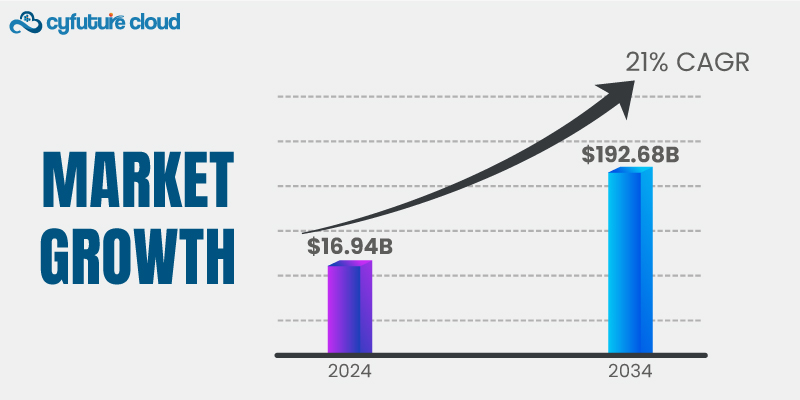
Market Growth
$16.94B (2024) → $192.68B (2034), +21% CAGR.
Key Components of an Enterprise GPU Cluster
|
Component |
Description & Enterprise Role |
|
GPUs |
High-performance NVIDIA (e.g., A100, H100) or AMD GPUs, sometimes 8–16+ per node |
|
Interconnects |
NVLink, InfiniBand, or PCIe to minimize data latency across thousands of GPUs |
|
CPUs |
Coordinate tasks and manage data transfer, not the compute backbone |
|
Storage |
NVMe SSDs for fast data access; often with tiered storage for cost control |
|
Cluster Manager |
SLURM, Kubernetes: for job scheduling, scaling, and health monitoring |
|
Cloud Platform |
Flexible access to GPU clusters (e.g., Cyfuture Cloud) with on-demand provisioning |
Where Are GPU Clusters Used? (Enterprise Use-Cases)
- AI/ML Model Training: Train billion-parameter models, accelerate LLMs and deep learning (e.g., fraud detection in banking finishes in 24 hours instead of 10+ days).
- Big Data Analytics & Real-Time Insights: Crunch terabytes of streaming data for finance, retail, and healthcare.
- Scientific Computing: Powering climate modeling, medical imaging, genomics, and drug discovery with rapid simulation and analysis.
- Computer Vision & Autonomous Systems: High-frame-rate video analysis, real-time vehicle or drone control, facial recognition.
- Rendering, Simulation & Graphics: Media and animation studios use clusters to reduce render times from days to hours.
Key Points & Takeaways
- GPU clusters make modern AI, analytics, and real-time applications feasible at enterprise scale.
- Market size is surging: $16.94B in 2024, reaching $192.68B by 2034, showcasing massive adoption.
- Cloud-driven flexibility: Enterprises can now access world-class clusters without upfront hardware investment.
- Sustainability and TCO: GPU clusters deliver better compute-per-watt and optimize resource allocation through AI-driven orchestration.
- Mission-critical reliability, scalability, and rapid deployment make GPU clusters foundational to digital transformation.
GPU clusters are not just the future—they’re the present foundation for enterprise AI cloud, analytics, scientific discovery, and digital transformation. As data, computational demands, and business ambitions grow ever larger, harnessing the power of GPU clusters via secure, scalable cloud platforms like Cyfuture Cloud will define the next era of intelligent enterprises.
Recent Post

Stay Ahead of the Curve.
Join the Cloud Movement, today!
© Cyfuture, All rights reserved.
Send this to a friend

 Pricing
Calculator
Pricing
Calculator
 Power
Power
 Utilities
Utilities VMware
Private Cloud
VMware
Private Cloud VMware
on AWS
VMware
on AWS VMware
on Azure
VMware
on Azure Service
Level Agreement
Service
Level Agreement 


